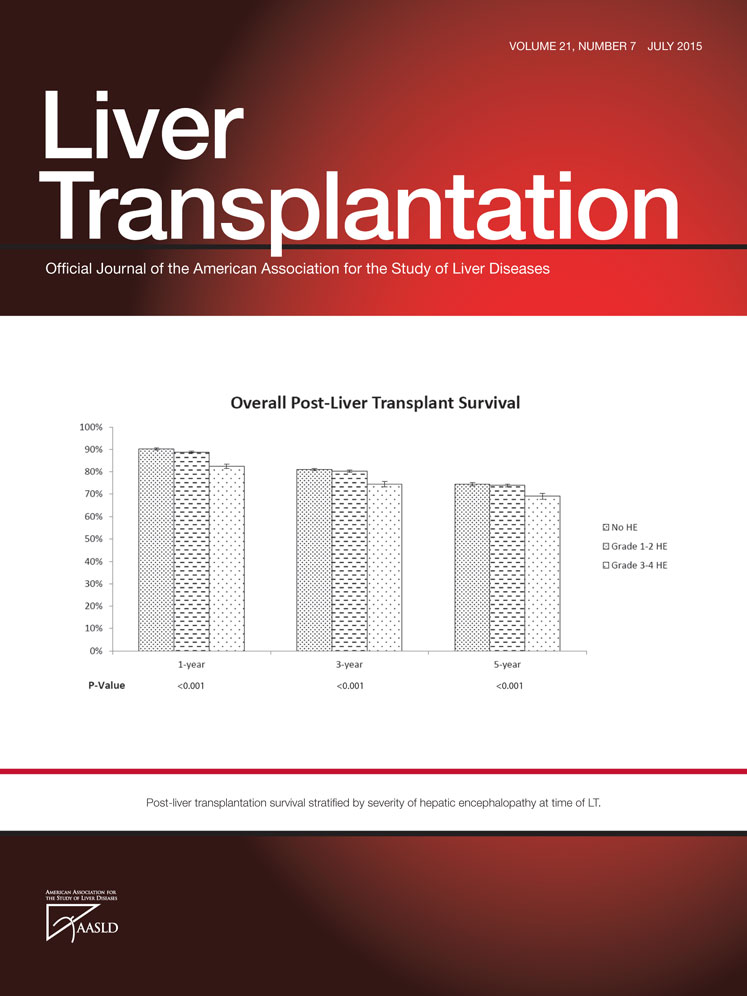Perioperative changes in nutritional parameters and impact of graft size in patients undergoing adult living donor liver transplantation
Potential conflict of interest: Nothing to report.
In a recent issue of Liver Transplantation, we read the article by Hammad et al.1 entitled “Perioperative changes in nutritional parameters and impact of graft size in patients undergoing adult living donor liver transplantation.” They aimed to investigate the benefit of liver transplantation with respect to several parameter changes and the impact of the graft-to-recipient weight ratio on such changes. However, we wish to make some comments on prealbumin levels, which the authors thought as one of these markers.
Prealbumin, or transthyretin, is a serum transfer protein for retinol and thyroxine. There are several factors that can change serum prealbumin levels. Previous studies suggested that certain diseases such as chronic kidney disease, Alzheimer disease, type 1 diabetes mellitus, acute phase response (infection, inflammation, or trauma), ankylosing spondylitis, rheumatoid arthritis, pneumonia, Helicobacter pylori infection, protein-losing enteropathy, Kawasaki disease, major depression, and thyroid diseases could affect serum prealbumin levels.2, 3 Hammad et al.1 did not mention these contributing diseases in their article.
Several drugs such as antithyroid drugs, nonsteroidal anti-inflammatory drugs, estrogens, progestational agents, and anabolic steroids could alter serum prealbumin levels.2, 4 In addition, dietary food supplements such as zinc, omega-3 fatty acids, vitamin A, and vitamin C can affect serum prealbumin concentration also.5, 6 In this regard, the authors should state whether the participants used these kinds of drugs and dietary supplements in their recent history.
A patient's body position while giving a blood sample is of great importance. It is recommended that blood samples for measuring plasma proteins be taken after approximately 15 to 20 minutes in a sitting position.2 If not, concentrations have to be evaluated with consideration of the patient's position.2 Lower levels are to be expected in bedridden patients.
Lastly, Bruguerolle et al.7 suggested that serum prealbumin levels showed a circadian rhythm. We think, it is essential to define the sampling time for the measurement of serum prealbumin to provide reliable data. Therefore, the interpretation of the findings with its current form seems problematic.
In conclusion, we believe that the study of Hammad et al.1 contributed valuable data to the medical literature. However, clarifying the above concerns will provide a clearer picture to the readers.
-
Mehmet Agilli, M.D.1
-
Tolga Dogan, M.D.2
-
1Department of Biochemistry
-
Agri Military Hospital
-
Agri, Turkey
-
2Department of Internal Medicine
-
Gulhane Military Medical Academy
-
Ankara, Turkey




